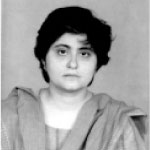The Human Resources Development (HRD) Ministry, we are told, is on the verge of declaring a new education policy; this will come 30 years after the second Education Policy of 1986. The committee to frame the policy has submitted its report in May. T.R.S. Subramanian was the chairperson of the five-member committee entrusted with the responsibility of integrating feedback collected by the HRD Ministry through grassroots and national-level consultations on multiple themes.
Families obsess about education in India and rightly so, but perhaps without fully appreciating why it is critical and why a national policy on education is even more so. The word democracy derives from the root ‘demos’ which means people. We are the world’s largest democracy that chooses its government at the local, state and central levels. We are also the world’s largest pool of illiterates, semi- literates, and have one of the highest educational inequality indices. Of the rural families, only 3% have graduates according to the recent Socio Economic and Caste Census. So how do we choose? Choice implies information about options and ability to process that information rationally. We are also building a market driven economy to give consumers many choices. How does a consumer decide what is good for his/her well-being? Developing rational impulse and ability to access evidence and analyse it is central to the purpose of modern education. Yet, the world’s largest democracy spends less as a percentage of its GDP (Gross Domestic Product), on public education than non-democratic states like China! These aspects of education have been lost in the crisis of education for most gainful employment, what we call ‘professional education’ in India for best salaries. That kind of education creates pools of skilled people who are now only used as disposable wheels in the production process. Skills are certainly needed, but no more than scientific attitudes, to fashion a progressive society.
This is an extraordinary discrepancy. And this has a historical trajectory. At Independence, between 12-14% of population could read or write. This literacy was biased in favour of men and upper castes. A national policy for education was tabled only in 1968. The first National Policy on Education was adopted twenty years after Independence. The Kothari Commission as it is called, becomes a watershed, calling for a revolution in the sector, with its emphasis on primary education, adult education, and significance of state funding .“There is of course one thing about which we feel no doubt or hesitation: education, science-based and in coherence with Indian culture and values can alone provide the foundation – as also the instrument – for the nation’s progress, security and welfare”.
It draws attention to primary education to fulfill Constitutional Directives, the need to increase per capita expenditure on education, and need to raise allocations in proportion to GNP (Gross National Product) from 2.9% (1966) to 6% (1986). Total expenditure on education was only about 3.5% of GDP in 2015. The proportion of resource allocations recommended never did materialise. But in 2009, the Right to Free and Compulsory Education Act was passed spelling out the duties of governments, local authorities and parents, to enable children between the ages of 6-14 to get educated in a neighbourhood school. It was a fundamental right finally enforceable in a court of law. In the background of persisting shortages of good quality government schooling, it required private schools to admit poor students and meet the deficit in revenues by increasing fees for other students or by other means. This was met with resistance from private schools who found various pretexts, including the difficulty of increasing fees in poor neighbourhoods. The people are therefore waiting to see a call for increase in allocations and new strategies to improve quality of public education at all levels.

 [/column]
[/column]